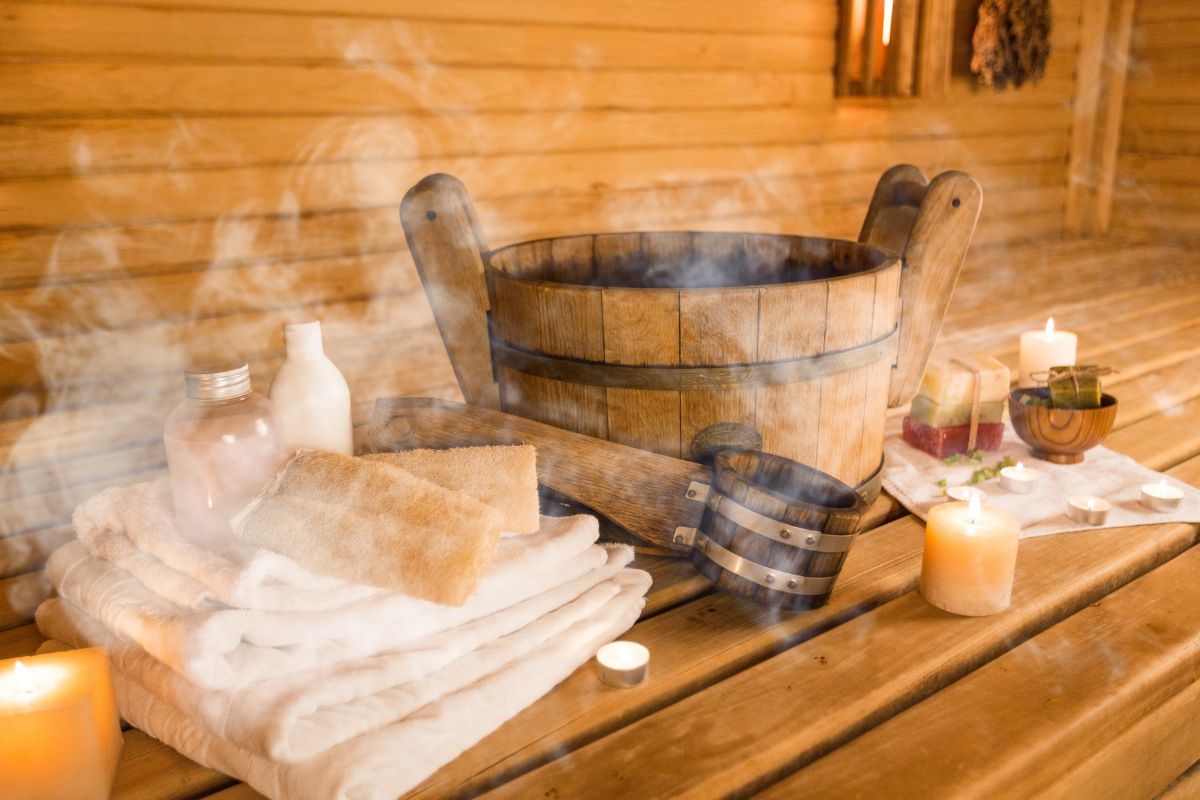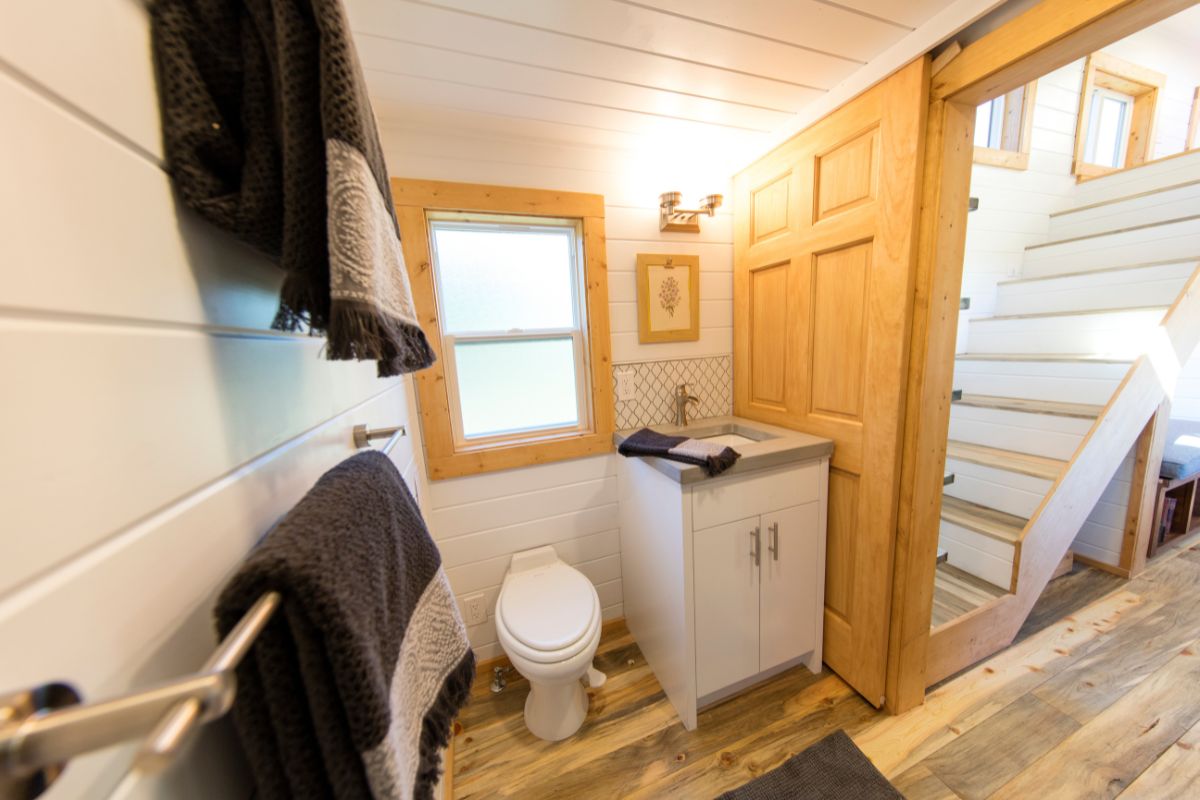Here, we will take you through the process from getting the correct type of sauna to its maintenance and care. Also, you will know more about different types of saunas: traditional, infrared, steam, and Heritage barrel saunas!
Picking the Best Sauna Type
.png)
Choosing the right sauna type for your home is crucial to ensure you get the most out of your investment. Each sauna type offers unique benefits and caters to different preferences and needs. Let’s explore the options to help you make an informed decision.
Traditional Sauna
In a traditional barrel sauna, the heater heats a stack of sauna stones, which, in turn, heat the air. In that respect, this sauna provides a high-temperature, low-humidity experience, hence warming, relaxing, and potentially invigorating many. Most people who appreciate the classic sauna experience will lean towards traditional saunas. They enjoy pouring water over the stones to create steam.
Infrared Sauna
Infrared saunas use infrared panels that give radiant warmth directly absorbed into the skin. These facilities operate at considerably lower temperatures than others, making them very comfortable for long periods of use. Infrared saunas are best for people who like mild heat and are in the quest for certain health benefits, including relief from pain and improvements in circulation.
Steam Sauna
Steam saunas, or steam rooms, provide wet heat by boiling water to produce steam. Since the sauna is wet, it is beneficial to the respiratory system and provides extra hydration to the skin. Because of the high humidity, this sauna type is ideal for a person seeking therapeutic sauna conditions.
Space and Location Requirements
Selecting the right space and location for your home sauna is essential for comfort and functionality. Whether you choose to install your sauna indoors or outdoors, understanding the space and location requirements will help ensure a seamless and enjoyable sauna experience.
Indoor Saunas
Indoor barrel saunas are easy to position almost anywhere inside your home, such as your bathroom, basement, or extra room. The location options of an indoor sauna have to involve whether the space supports ventilation and plumbing options. Also, make sure there is enough space for the sauna. The area must be spacious enough to hold the sauna and ventilated enough so that there is not a lot of moisture in the air.
Outdoor Saunas
Outdoor saunas can be located outside your house in the backyard, in the garden, or close to a pool area. When selecting an outdoor location, it should provide some level of privacy and access and offer some level of protection from the elements. Naturally, ensure that this area is level and has a solid foundation that is supportive of the sauna's overall weight. Also, ensure that there is adequate drainage and access to power in the event you have a barrel sauna that functions with an electric heater.
Building and Materials
Sauna construction requires the right choice of wood. Some of the recommended types of wood are cedar, hemlock, and spruce. Cedar is considered a better alternative since it is long-lasting, water-resistant, and pleasant in aroma. A less expensive type of wood is hemlock, which has a smooth finish and is said to be durable. My favorite is spruce due to its light color and cheapness.
Proper insulation is essential so that the sauna's temperature is held at the desired level. This prevents heat loss, making the sauna energy-efficient. Proper ventilation is also essential for fresh air circulation and the removal of extra humidity. Installing vents at the top and bottom of the sauna enables air change and temperature control.
Heating Options
The choice of heating system is a key factor in determining your sauna's performance and overall experience. Each heating option offers distinct advantages and caters to different preferences. Let’s explore the various heating options available to help you select the best fit for your home sauna.
Electric Heaters
Electric heaters are very popular for their ease of use and the good, steady heat they provide. They are straightforward to install and can even be fitted with thermostatic control. Electric heaters work very well in either the traditional or infrared sauna. Make sure the electrical service in the room is sized to handle the power the heater will consume.
In the topic of infrared panels, these sauna options give you all that a traditional wood-burning stove does while getting the comforting scent of the fire without the need for a chimney. Most easily installed in an outdoor sauna barrel area, they provide lower maintenance requirements with an authentic look.
Infrared Panels
The panels are energy-saving and easy to install. Infrared saunas usually heat up at much lower temperatures than traditional saunas, which makes them ideal for long sessions. According to the manufacturer's prescriptions, the panels ought to be fitted as they are supposed to function.
Must-Have Sauna Accessories
It is essential to have the right sauna accessories to enhance the sauna experience further. These accessories relate to the most significant and desired comfort, thus improving the sense of functionality while mindfully considering one's safety and delight. Explore the most critical sauna accessories that you should have in your sauna setup at home.
.png)
Benches and Seating
Benches and resting places are very important for comfort and practicality. Look for benches made of the same wood material as the sauna. Ensure that the benches are strong enough and duly fixed to accommodate children and adults. Always go for multi-level benches since they allow users to have different sauna barrel temperatures.
Sauna stones are essential for traditional barrel saunas, as they retain and radiate heat. Choose high-quality stones that can withstand high temperatures without cracking. Properly arrange the stones to allow for even heating and optimal steam generation when water is poured over them.
Lighting and Controls
The lighting should help establish the mood but still leave enough to ensure safety while inside the sauna. During the planning phase, a more indirect lighting plan should be developed, one that will set a calming environment once inside the sauna. The control systems inside the sauna should be easy to use to facilitate easy temperature and timer adjustments. Advanced control panels can also offer features such as remote operation and preset programs.
Safety Considerations
To prevent accidents, have all electrical installations done correctly by licensed professionals.
Wood-burning saunas should have a proper chimney and provision for a spark arrestor to eliminate fire chances. Keep anything flammable away from the stove and have a typical fire extinguisher in place. The chimney should be cleaned regularly to prevent creosote buildup.
Always have a timer to monitor the interval of time and prevent being subjected to it for a long time. Install a thermometer and hygrometer to follow the temperature and humidity. Offer guidance in the safe use of the sauna by emphasizing the need for hydration and pointing out medical advice for users with health considerations.
Maintenance and Care
Keep your sauna clean and hygienic by wiping down all surfaces with a gentle detergent regularly. Ventilate the sauna after each use to prevent sweat stains and mold formation. Clean sauna stones and replace them to maintain optimal performance.
Check on all elements like the heater, benches, and ventilation system often, and in case there's a need, tighten the screws and replace the components. Regular check-ups will serve to add life to the sauna and also guarantee safety and the best results.






Share: